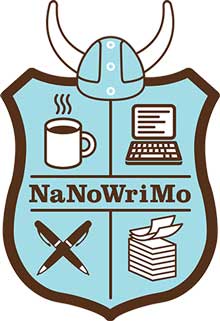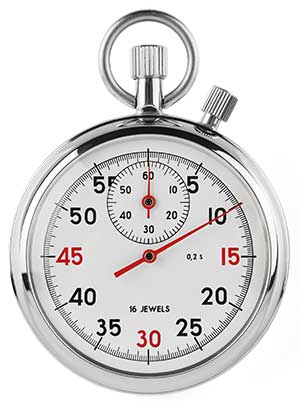
Since its inception in 1999, the National Novel Writing Month (NaNoWriMo) has inspired hundreds of thousands of people to become novelists. Participants sign up at the nonprofit NaNoWriMo.org and track their progress toward writing a 50,000 word novel during November. The organization offers many supports, including encouragement from published novelists.
Since Thoughtful Learning has its own published novelist on staff (J. Robert King), we asked him to offer his advice to aspiring writers.
Tip 1: It's a marathon, not a sprint.

A brilliant idea comes to mind. Flush with excitement, you sit down to write. If you are writing a short story, you can pound that thing out while inspiration courses through you like adrenaline. Short stories are sprints: The starting gun is still ringing in your ears when you cross the finish line.
Not so with novels. Novels are marathons. Even if you can carry your excitement for two or three chapters, you'll reach a point where "I'm not feeling it" anymore. That's okay. Keep writing. Then you'll reach a point where "I don't know why I decided to do this." That's all right. Keep writing. You may even hit the wall and say, "I'll never be a writer." Push through just like a marathon runner. Writing a novel is a daily decision. Pace yourself and keep going. You'll get there.
Tip 2: Pacing is about doing the math.

Just as a marathon runner tracks distance over time to maintain a successful pace, a novelist under deadline must track words over time. To write 50,000 words in November, you need to set daily goals:
- 1,667 words per day, every day; or
- 2,273 words each weekday (Monday through Friday); or
- 6,250 words every weekend day (Saturday and Sunday).
That doesn't mean you have to hit the exact count each day, but you need to average that count. If the first week passes and you aren't anywhere near that average, you need to recalculate your pace based on the remaining words and days.
Tip 3: First quantity, then quality.

To write 50,000 words in one month, you need to write fast. Lots of words. Will they all be perfect? No. They don't have to be perfect. They just have to be. Again, think of a marathon runner. Is every step going to show perfect form and demonstrate absolute grace? No. This isn't Swan Lake. This is a race that takes guts and perseverance. What matters is that you keep running at your pace.
Indeed, NaNoWriMo.org does not make any determination about the quality of what you have written, but only the quantity. The point is to use the deadline to inspire you to complete a first draft. You can't revise and edit a novel that doesn't exist, so let November be the month you bring it into existence. Then spend December and thereafter making it exactly the novel you want.
Tip 4: Break through writer's block.

Writer's block happens to just about every writer. Don't panic if it happens to you. The first step to breaking through is recognizing what is going on.
Writer's block occurs when you are trying to simultaneously think creatively and critically. Creative thinking arises from a complex coordination between multiple brain regions and the emotional center (limbic system), whereas critical thinking arises from the prefrontal cortex. The paths of these two types of thinking cross in the temporal lobes, which are the language centers behind your ears. That's where the trouble occurs. You have all these diverse parts of the brain trying to work creatively with language, producing art. Simultaneously, you have the prefrontal cortex trying to work critically with language, producing logic.
So, you write a sentence. Then you read it and think it is terrible. You delete that sentence and stare for a little bit before writing another one. It is just as bad if not worse. You delete that sentence as well, say something under your breath, and stare a while longer. You try another sentence, which somehow is the worst sentence of all, and you delete it and say, "I'm not a writer, I guess."
No. You are a writer. You're just using your brain wrong. Shut off that prefrontal cortex. Stop thinking critically. That kind of thinking is perfect after you have a first draft, but right now, you need to remember Tip 3: First quantity, then quality. Tell yourself you are a genius and that geniuses always have messy workspaces and that these imperfect sentences only prove that you are really on to something and that you're not going to let the haters in your own head shut you up any longer.
Tip 5: Get in the zone.

Athletes, including marathon runners, seek a state of flow characterized by intense awareness of the moment coupled with the effortless performance of muscle memory. In other words, they focus their conscious minds on what matters and let their unconscious minds do what they do best.
As a writer, you can also "get in the zone." Tune your attention to ideas, not to the words, sentences, and paragraphs that carry them. Immerse yourself in a setting and write what you see, hear, smell, taste, and touch. Don't perseverate on writing description or exposition. Watch your characters' faces and bodies as they move about each other, listen to what they say, and simply write down what happens. You know you are writing in the zone when you no longer get to tell your characters what to do, but instead follow behind them and watch what they do.
Tip 6: Use your process.

Some novelists outline every chapter, sketching out the whole arc of the story from start to finish before writing anything. (In fact, NaNoWriMo lets you do as much outlining as you want before November, but you can't include any of the outline material directly in your draft.) When I have been under tight deadline (which NaNoWriMo is), I have taken this approach so that I waste no time wondering, "What should I write today?" The great thing about outlining is that you know where you are going and have a structure. The problem is that your characters may not want to go there, and if you stick too religiously to your outline, your novel will never come to life.
Other novelists write whatever comes to mind in the moment. This organic approach involves planting seeds, watering them, weeding them, and seeing what comes up. The most creative and exciting ideas tend to come from this approach because the writer isn't even sure where the story is going. I have written most of my spec novels this way, discovering amazing things as I go along. However, just like a garden, an organic book needs constant tending so that it doesn't sprout rampant weeds or wither and die on the vine.
Still other novelists have a different approach. Ray Bradbury once said, "Every morning I jump out of bed and step on a landmine. The landmine is me. After the explosion, I spend the rest of the day putting the pieces together."
There isn't a wrong way to write a novel. The results are what matter. If you build it like a building, you need to reach the point where that building comes alive. If you grow it like a garden, you need to reach a point where it has structure, form, and purpose. And if you step on a landmine every morning, you've got to keep going until you put the pieces of yourself back together. Find out what approach works for you, and keep going with it until you have a fully formed work.
Tip 7: Use your resources.

After you've signed up (for free) at NaNoWriMo.org, make sure to take advantage of the many resources they offer:
- Track your novel online and award yourself personal achievement badges to celebrate your successes and struggles.
- Get inspired by many free resources, including encouragement from published novelists to help you keep going.
- Meet other writers online or in your region, providing each other inspiration and support.
- Log your success by pasting your novel of 50,000 or more words into the system so that you get credit for your accomplishment.
So, get writing! See you in December!